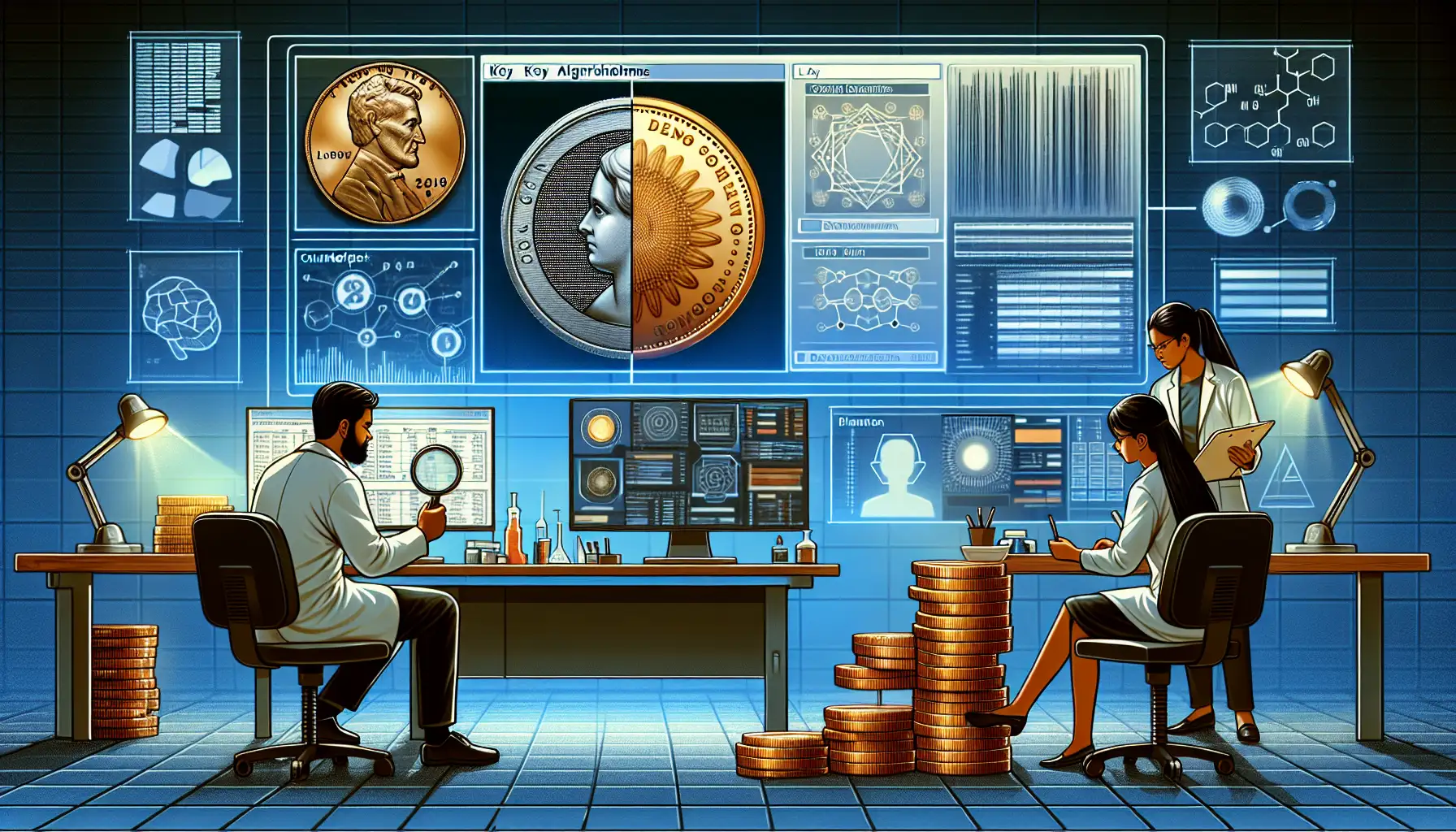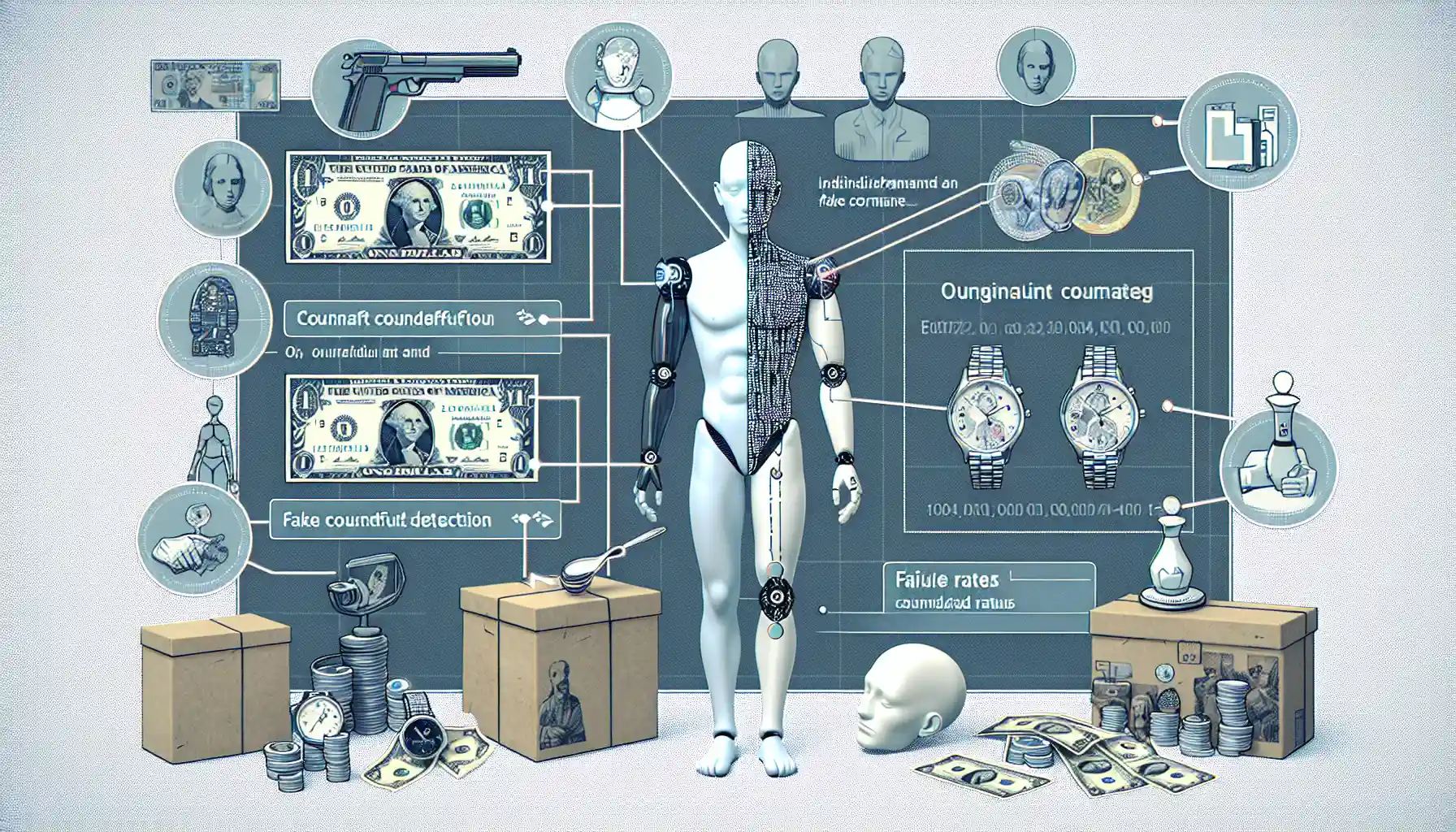Understanding the Role of AI in Detecting Counterfeit Coins
Why Historical and Medical Counterfeits Demand Precision
When it comes to coins with
historical significance or ties to
medical research, authenticity is everything. Imagine holding an ancient Roman coin, its surface whispering stories of emperors and empires—only to discover it's a fake. Or consider a medical token used in 19th-century hospitals, an artifact that could unlock secrets about early healthcare systems. A counterfeit in these cases isn’t just a fake—it’s a thief of history and knowledge.
This is where the magic of
AI algorithms steps in. These systems don’t just scan; they scrutinize. Every groove, engraving, and imperfection is analyzed with a precision no human eye could match. For instance, AI can detect inconsistencies in metal composition or wear patterns that seem "off." It’s like giving these coins a microscopic lie detector test.
- Advanced imaging tools uncover hidden layers beneath the surface.
- Machine learning models compare millions of data points in seconds.
- Historical databases feed the algorithm with context-rich details.
AI doesn’t just spot a fake—it unravels the story behind it. And for coins steeped in historical or medical importance, that’s a priceless skill.
Key Algorithms Used for Identifying Counterfeit Coins

Unmasking the Fakes: The Algorithms Behind the Magic
Picture this: a gleaming coin held between your fingers, its surface whispering stories of empires, revolutions, or even ancient trade routes. But is it real, or just a clever counterfeit? Enter the world of AI algorithms—a fusion of math and intuition that’s almost poetic in how it unravels these mysteries.
At the heart of this process lies pattern recognition. Think of it as a detective with a magnifying glass, scanning for clues. AI algorithms analyze minuscule details like
surface textures, edge designs, and even the chemical composition of a coin’s material. For instance, an algorithm might spot irregularities invisible to the human eye—like a slight inconsistency in the engraving depth or an anomaly in the alloy mixture.
- Neural networks: These work like a brain on steroids, learning from thousands of images to distinguish authentic coins from fakes.
- Image segmentation: This technique breaks down a coin’s image into sections, scrutinizing each part for signs of forgery.
What’s truly remarkable? These algorithms don’t just stop at detection—they often piece together a timeline, revealing whether the counterfeit was crafted yesterday or centuries ago.
The Intersection of Coin Authentication and Historical Medical Insights

The Art of Detecting Counterfeits: Where Coins Meet Medicine
Imagine holding a coin that dates back centuries—a piece of history resting in your palm. But how do we know it’s real? Enter the fascinating world of AI algorithms, which are transforming how we authenticate coins with both historical and medical significance. Yes, you read that right—medical!
These advanced systems analyze more than just the surface. They scrutinize details like microscopic scratches, oxidation patterns, and even the elemental composition. Think of it as a digital fingerprint scanner for coins. But here’s the twist: AI often borrows techniques from the field of medicine! For instance, tools used to detect abnormalities in X-rays or CT scans now help pinpoint counterfeit anomalies in ancient coins.
- Texture analysis: Just like identifying skin irregularities in dermatology, AI detects unnatural wear patterns on coins.
- Spectral imaging: Originally designed to locate tumors, this method reveals hidden layers of a coin’s composition.
It’s a curious overlap of two worlds—where a counterfeit coin might be exposed by the same technology that diagnoses illnesses. Who knew history and health could be so intertwined?
Challenges in Using AI for Counterfeit Detection

The Balancing Act: AI's Struggles in Counterfeit Coin Detection
Imagine giving a robot the task of deciphering a centuries-old mystery. Sounds thrilling, right? Yet, when it comes to detecting counterfeit coins with
historical or medical importance, AI faces a mountain of challenges. First off, there's the issue of
inconsistent data. Coins from different eras and regions often exhibit wildly varied designs, materials, and wear-and-tear. Feeding this hodgepodge of information into an algorithm can feel like asking a chef to bake a cake without a recipe.
And then there’s the problem of
forgeries evolving over time. Today's counterfeiters are no amateurs; they use advanced techniques to mimic even the most intricate details. For AI, this means constantly learning new tricks just to keep up. Imagine trying to outwit someone who’s always one step ahead—it’s exhausting!
But let’s not forget the human touch. Experts often rely on intuition—those subtle “gut feelings” that no machine can replicate. AI might recognize patterns, but it doesn’t "feel" the story behind a coin, its whispers of history, or its cultural heartbeat. And isn’t that what makes it truly priceless?
Future Prospects of AI in Coin Authentication and Preservation

The Hidden Stories Coins Carry: Why Precision Matters
Imagine holding a coin that once passed through the hands of an emperor or was tucked into the pocket of a World War II soldier. These aren’t just pieces of metal—they’re tangible fragments of history, whispering secrets of lives lived long ago. But counterfeit coins? They’re like imposters crashing a royal banquet, muddying the waters of historical authenticity. That’s where AI algorithms step in, armed with precision sharper than a master engraver’s chisel.
AI doesn’t just “look” at a coin—it scrutinizes every curve, every shadow, every microscopic imperfection. It dives deep, analyzing details like metallurgical composition and even wear patterns from human touch over centuries. Here’s what AI examines to separate fact from forgery:
- Surface anomalies: Tiny scratches, casting bubbles, or inconsistencies invisible to the naked eye.
- Material fingerprint: The exact mix of metals tells stories of where and when a coin was minted.
- Historical wear: Genuine coins age gracefully; fakes often fail this subtle test.
Think of it as AI playing detective, historian, and scientist all at once, ensuring these tiny artifacts keep their rightful place in history’s narrative.




